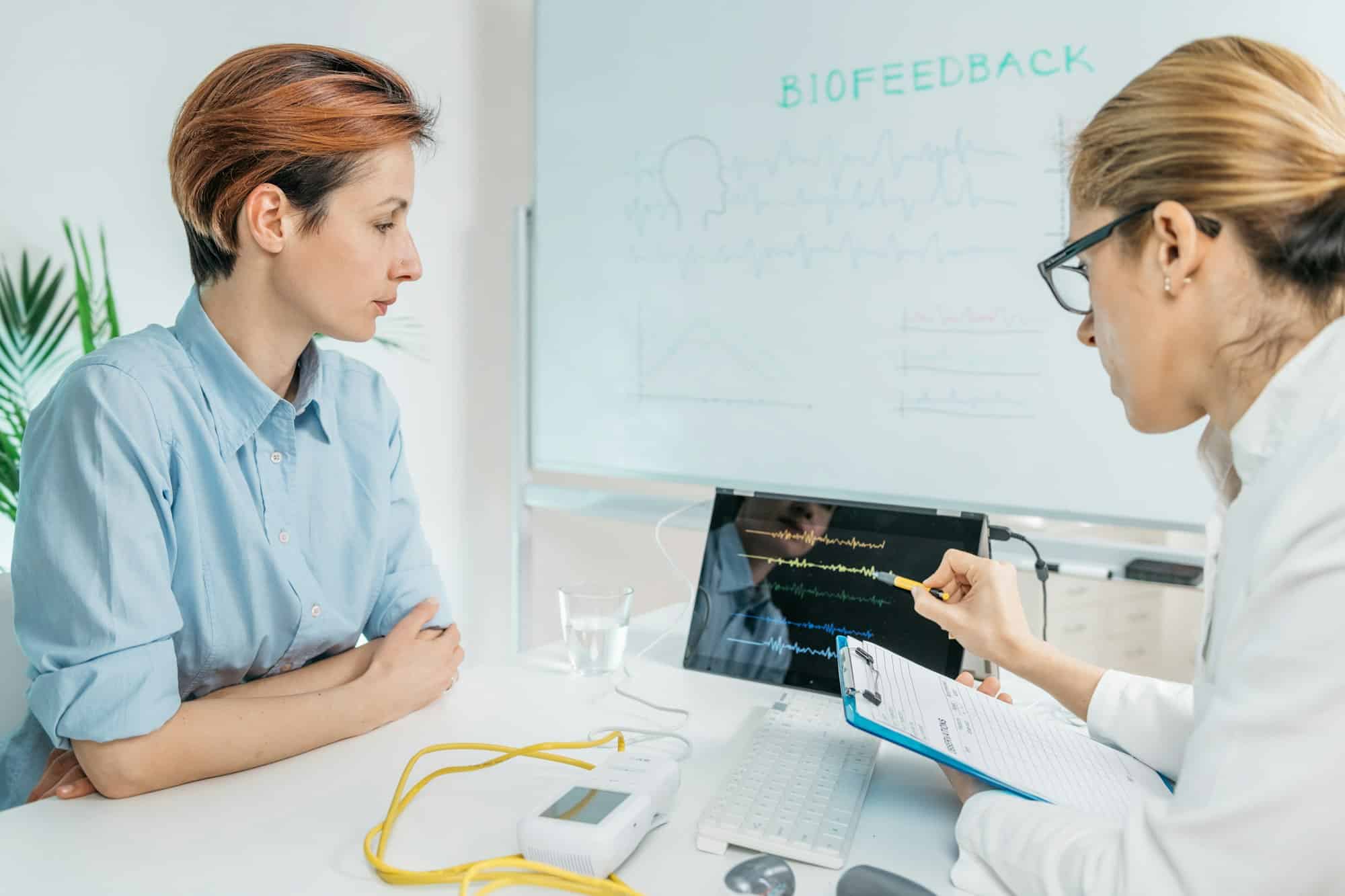How Can Biofeedback Techniques Optimize Free-Throw Shooting in Basketball?

In the realm of **sports, the drive for performance enhancement is a perennial pursuit. Athletes continually strive for the edge that will distinguish them from their competitors. This ongoing quest often leads them down the path of advanced training methodologies, in-depth performance analysis, and sophisticated technological tools. Given the current wave of digital revolution sweeping across all areas of life, including sports, athletes can now leverage cutting-edge technologies to improve their skills and performance. One such promising technology is biofeedback.
Biofeedback is a technique that trains individuals to improve their health and performance by using signals from their bodies. In the world of basketball, for example, a free throw is one skill that could greatly benefit from biofeedback training. In this article, we delve into how biofeedback techniques such as neurofeedback can optimize free-throw shooting in basketball.
Also read : What Are the Benefits of High-Density Altitude Training for Elite Marathon Runners?
The Science of Free-Throw Shooting in Basketball
Free-throw shooting in basketball is both a science and an art. The beauty of the shot lies in its simplicity yet it is one of the most nerve-wracking moments in a game. It requires precision, consistency, and a calm nerve. To understand how biofeedback techniques can optimize free-throw shooting, it is essential first to comprehend the science behind the shot.
Basketball is a game of angles and physics, and free-throw shooting is no exception. The throw involves a delicate balance of force, angle, and trajectory. While physical skills are critical, cognitive skills such as focus, concentration, and emotional control also play an essential role.
In parallel : What’s the Impact of Weighted Vest Training on Bone Density in Post-Menopausal Women Athletes?
A study conducted by Harvard Sports Analysis Collective demonstrated that free-throw shooting success is significantly influenced by a player’s mental state. The study found that players who had just committed a personal foul shot slightly worse from the free-throw line than their baseline percentages, indicating the power of mental pressures on performance. This is where biofeedback comes into play.
Biofeedback and Neurofeedback: The Basics
Biofeedback is a self-regulation technique that teaches users to consciously control physiological functions such as heart rate, muscle tension, and brainwave patterns. Neurofeedback, a form of biofeedback, specifically targets brainwave patterns. To put it simply, biofeedback provides real-time feedback on your body’s physiological states, empowering you to take control of your bodily functions.
In a typical neurofeedback session, sensors are placed on the user’s scalp to measure brainwave activity. These measurements are then displayed on a screen, allowing the user to see their brain’s activity in real-time. Through this process, the user learns to control their brainwave patterns, leading to improved mental performance.
This is not science fiction. Biofeedback and neurofeedback have been validated by numerous studies and are being used in diverse fields, from psychology to sports. For instance, a group of Italian researchers in an experimental study published in the journal ‘Sports’, found that neurofeedback training improved athletes’ sports performance by increasing their ability to concentrate and decrease anxiety.
Applying Biofeedback Techniques to Free-Throw Shooting
So, how can these techniques be applied to free-throw shooting in basketball? The key lies in understanding the importance of focus and calmness during the execution of a free throw.
Just as athletes train their physical skills, they can also train their brains using neurofeedback. By controlling their brainwave patterns, athletes can achieve a state of ‘peak performance’ or ‘flow’, characterized by heightened focus, calmness, and improved execution of skills.
For instance, using neurofeedback, a player can learn to enter a state of calm focus before a free throw. This state can help eliminate distractions, reduce anxiety, and improve the accuracy of the shot. Over time, the player can learn to enter this state on command, without the need for biofeedback equipment.
A New Frontier in Sports Performance Training
The incorporation of biofeedback techniques in sports training represents a new frontier in performance enhancement. Sports organizations and athletes worldwide, including those in the NBA, NFL, and Olympics, are increasingly adopting these techniques to gain a competitive edge.
Harvard Business Review highlighted how the Golden State Warriors, an NBA team, used neurofeedback techniques to help players maintain focus during high-pressure situations. In addition, the ISO group, a leading provider of sports performance analysis tools, partnered with Google to develop a platform that integrates biofeedback data with other sports performance metrics.
The use of biofeedback in sports performance training is still in its early stages, with much more to explore and discover. As the technology improves and becomes more widely accessible, it is likely that more athletes and sports organizations will adopt these techniques. And for those seeking to optimize their free-throw shooting in basketball, biofeedback techniques like neurofeedback could well be the key to unlocking their full potential.
While the journey of integrating biofeedback techniques into basketball training may seem daunting, the potential benefits are enormous. The possibility of improving not only performance but also mental well-being, resilience, and overall quality of life for athletes is a game-changer. As technology continues to progress, it’s fascinating to imagine just how far biofeedback can take the sports world. Who knows? It might just revolutionize the way we play sports.
Biofeedback in Action: Case Studies in Free-Throw Shooting
In the realm of free-throw shooting, biofeedback techniques are showing promising results. Several case studies have demonstrated the potential of these techniques in improving free-throw performance.
One such study, published on Google Scholar, investigated the impact of neurofeedback training on the free-throw shooting performance of top-level basketball players. The players received neurofeedback training aimed at enhancing their concentration and reducing anxiety. The results showed a significant improvement in the players’ free-throw shooting performance, validating the effectiveness of neurofeedback training in enhancing sports performance.
Similarly, another study, adopting both Vancouver ISO and APA Harvard citation styles in its abstract, used heart rate biofeedback to train basketball players. The aim was to help the athletes achieve an optimal heart rate zone, associated with peak performance. The study found that players who underwent heart rate biofeedback training exhibited improved consistency in their free-throw shooting. This result further demonstrates the potential of biofeedback techniques in performance enhancement.
Furthermore, a full text case study using neurofeedback training highlighted its impact on a professional basketball player’s free-throw shooting performance. The player, who had been struggling with free throws, underwent a series of neurofeedback training sessions. After the training, the player showed dramatic improvements, increasing his free-throw percentage by over 20%.
These case studies clearly illustrate the potential of biofeedback techniques in improving free-throw shooting performance. By giving athletes real-time feedback on their physiological states, these techniques enable them to achieve optimal physical and mental states for peak performance.
Conclusion: The Future of Biofeedback in Sports Performance
The research on biofeedback and its application in sports, particularly in free-throw shooting, is truly exciting. As our understanding of the human body and brain continues to grow, so does the potential of biofeedback techniques. It’s not just about improving sports performance; it’s also about enhancing athletes’ mental well-being and resilience.
The future of biofeedback in sports performance looks promising. As the technology becomes more advanced and accessible, it’s likely we’ll see an increasing number of athletes and sports organizations embracing these techniques. Neurofeedback training could well become a standard part of training for basketball players, helping them to optimize their free-throw shooting and overall performance.
The partnership between ISO group and Google to integrate biofeedback data with other sports performance metrics is a prime example of the potential of this technology. As more such collaborations emerge, the possibilities for biofeedback in sports performance will continue to expand.
The journey to integrate biofeedback techniques into sports training is just beginning. With the potential benefits of improved performance, mental well-being, and resilience, it’s a journey worth undertaking. As we move forward, it’s exciting to imagine the new frontiers that biofeedback will open in the world of sports performance. The ultimate goal is to help athletes unlock their full potential and redefine the limits of what’s possible in sports.
